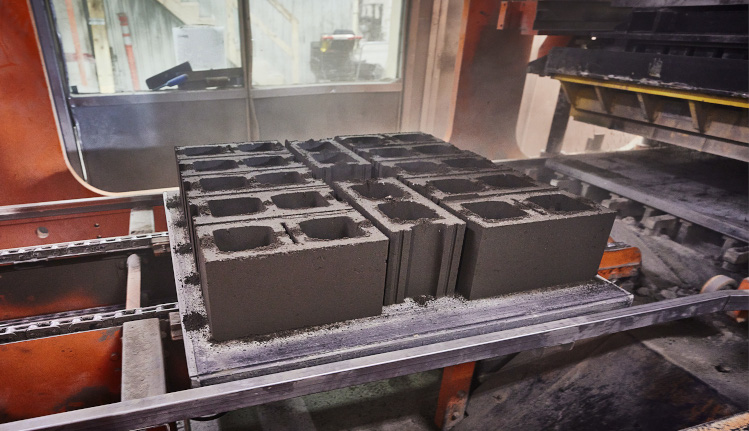
When starting a new building project, the choice of material for the structure’s foundation and envelope is an extremely important decision. The material of a building influences the project’s cost, timeline, and environmental impact, as well as the longevity and upkeep costs of the building itself. When choosing between materials like wood, steel, cast-in-place concrete, etc., keeping concrete masonry units (CMUs) in mind is a smart way to ensure your project is cost-effective and resilient.
A 2020 study by the Canada Masonry Design Centre in New Brunswick compared loadbearing masonry comprised of CMUs to traditional wood framing and cast-in-place concrete. Cost-wise, the study found that loadbearing masonry was 4% more expensive than wood frame and 8% more expensive for slab-on-grade. However, the study found that “this nominal cost difference did not account for the added benefits associated with using masonry materials such as increased fire ratings, a non-combustible building structure, added sound insulation properties and reduced maintenance costs associated with a more durable building.”
When compared to conventional wood framing, loadbearing masonry can provide further cost savings when used in conjunction with a masonry-friendly building layout that allows for loadbearing masonry walls to be utilized. In the context of a building’s full life cycle assessment (LCA), using CMUs can be as much as 20% less expensive when comparing the entire cost of the building, and can allow for a project to be completed in nearly 50% of the time. When using CMUs, a building can be constructed as quickly as one storey per week, and floors are enclosed quickly, so that other contractors can begin working on a floor while construction continues on floors above it.
Even in comparison to cast-in-place concrete, which is poured at the building site, precast concrete blocks present improvements in moisture resistance, weather resistance, eco-friendliness, ease of installation, cost-effectiveness, reliability, capability for large or heavy buildings, and versatile design. When it comes to knock-on benefits and ultimate cost, precast CMUs are one of the most cost-effective and long-lasting materials you can use.
The MIT Concrete Sustainability Hub assessed concrete’s role in reducing building and pavement emissions in 2021. As the intensity of concrete use increases, new innovations in concrete technology are essential to keep our built environment sustainable for the future. The CSHub found that by 2050, even as concrete use accelerates, emissions from the building and pavements sector could be reduced by up to 65% with the incorporation of optimized technology. The most significant development in concrete will have to be in the reduction of the emissions incurred in the production of concrete’s main active ingredient, cement, accompanied with CCUS incorporation in concrete plants.
At CarbiCrete, new innovations are continuously being made in the technology of sustainable CMUs. By using steel slag, an industrial by-product, instead of cement, the CarbiCrete process can reduce the emissions from producing one tonne of concrete from 800 kgs CO2 to 0 kgs. Furthermore, CarbiCrete sequesters CO2 within CMUs, leading to a net-negative emissive product. With improved compressive strength and curing time compared to conventional concrete, CarbiCrete CMUs provide all the benefits of loadbearing masonry with an improved environmental impact.



